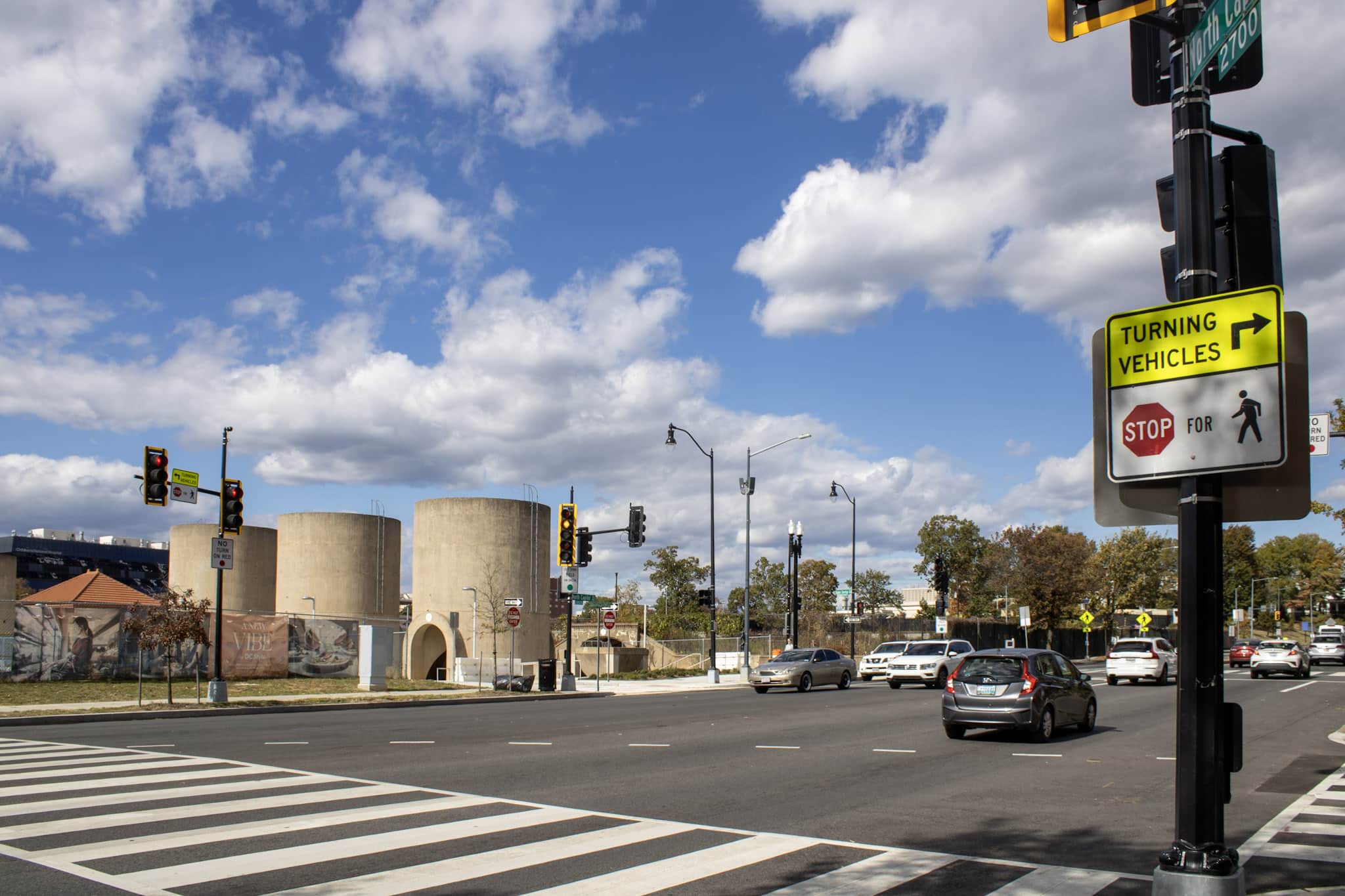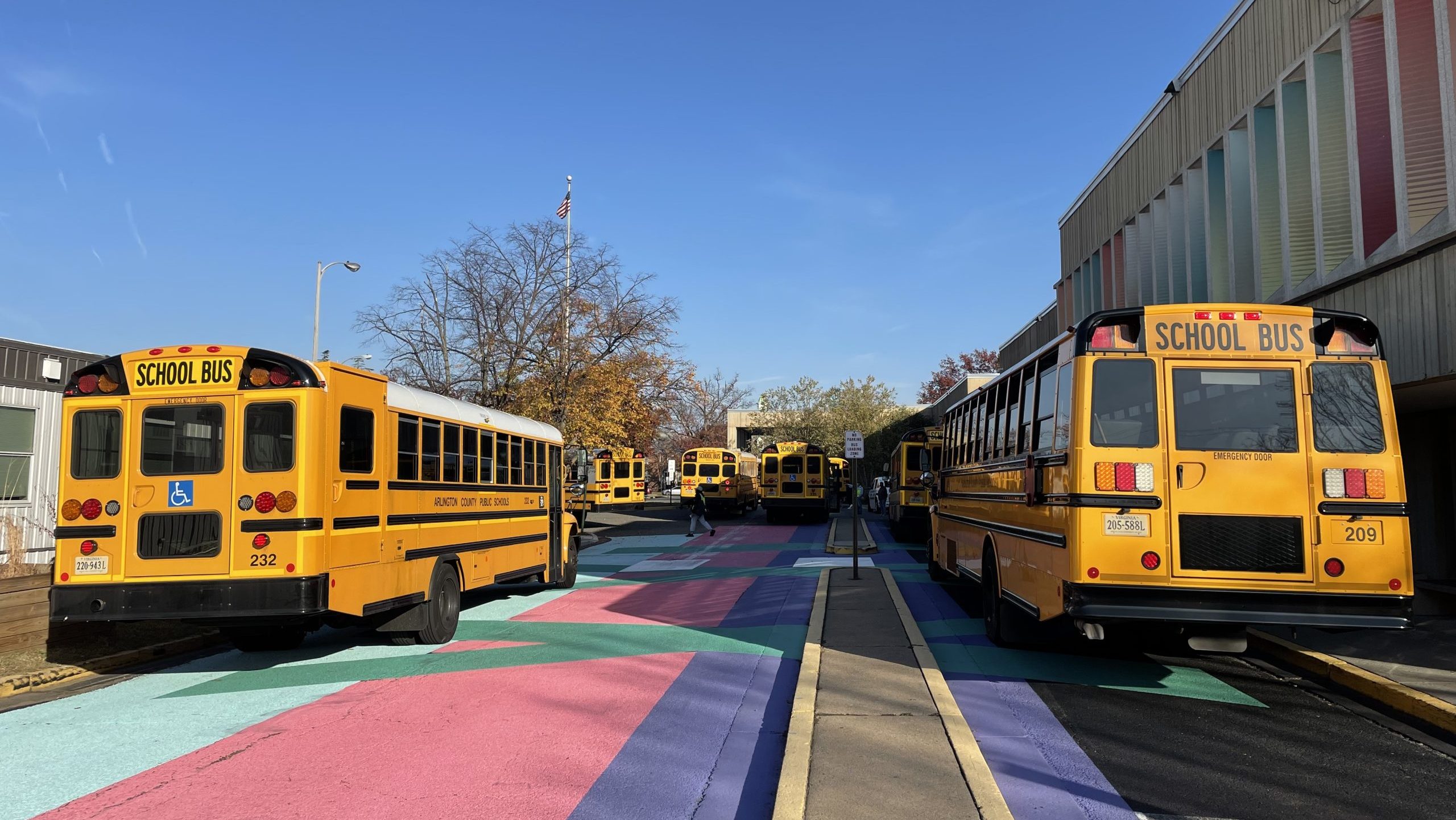
The “3 Rs” of School Transportation
Insight Highlights:
- Safe and efficient operations of school transportation should be an essential component of their planning, design, and operations.
- In this Insight, we’ll be covering several reasons why K-12 schools often are the most complex land uses we work with, and provide general recommendations on how to approach these complexities.
- This includes insights for transportation planners, school administrators, and K-12 school architects and engineers.
Of all the types of buildings and projects we work on at Gorove Slade, K-12 school projects are consistently the most complex and unique. The work performed for a school is often greater than a large office building or shopping center, which seems counterintuitive but there are good reasons for that. Knowing and understanding those reasons is essential for Gorove Slade’s continued success working on schools. Let’s explore the three largest issues, the “3 Rs” of school transportation.

School buses can take up a lot of space
1. Schools Have Recognizable Travel Demands
First, the majority of the time you walk or pass by a school, there’s minimal to no transportation activity taking place. But this serene environment is disrupted twice a day by a deluge of activity during morning arrival and afternoon dismissal, which have very concentrated transportation demands in a short period of time.
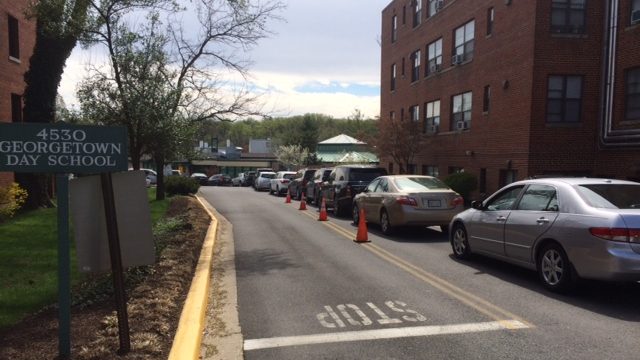
Long line of cars waiting to pick-up students
Secondly, schools must also accommodate school buses that can take up a significant amount of space and have their own special transportation needs. How buses are accommodated, routed, and stored are important considerations on a school site. Ideally, school bus routing and boarding/alighting areas should not conflict with other transportation needs.
Finally, while students are generally easy to control and will follow directions, the same can’t be said for their parents. Well-designed plans can quickly fail when parents ignore rules. When planning schools, operational and infrastructure solutions must account for what happens when parents don’t behave.
In addition, transportation demand varies by school type.
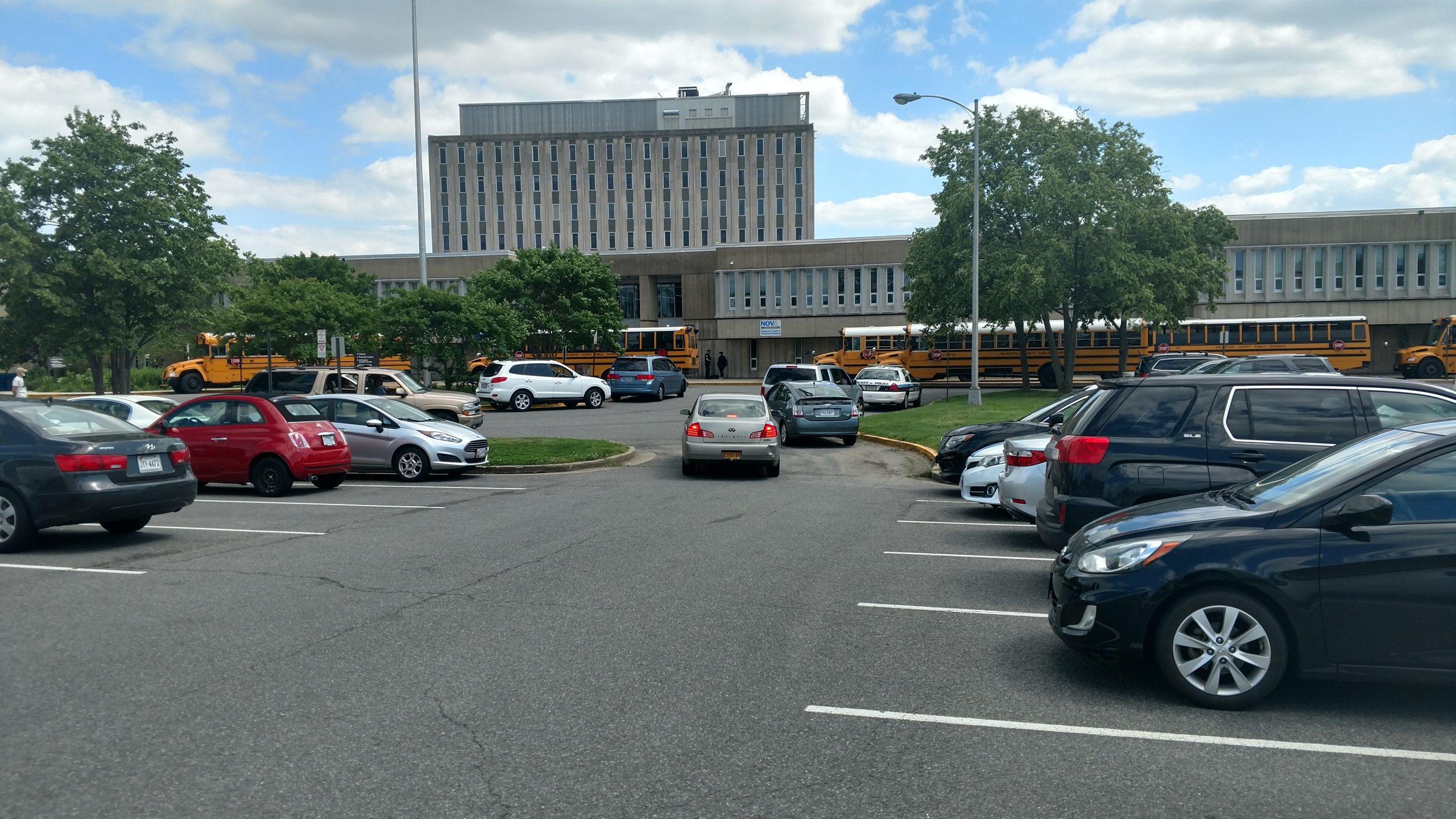
Parents not following rules, blocking drive aisles and bus routes
Grade Level Matters
In general, the lower the grade, the higher vehicular demand is generated. This is due to several factors such as younger students are less likely to walk or bike on their own, and as grade levels increase, so does participation in after-school activities. Additionally, families with young students are often restricted from carpooling simply because of car seat requirements. The difference in high school is even larger, with many schools allowing for different morning arrival times for students, and a much greater participation rate in after school activities. Combining those factors with older high school students driving on their own, high schools can have much less overall demand.
The following chart demonstrates the differences between elementary students and older high school students. The significant drop in the number of students being picked-up and dropped-off leads to much fewer traffic impacts per student between the two (pick-up/drop-off has a much higher impact to the transportation network than driving and parking).
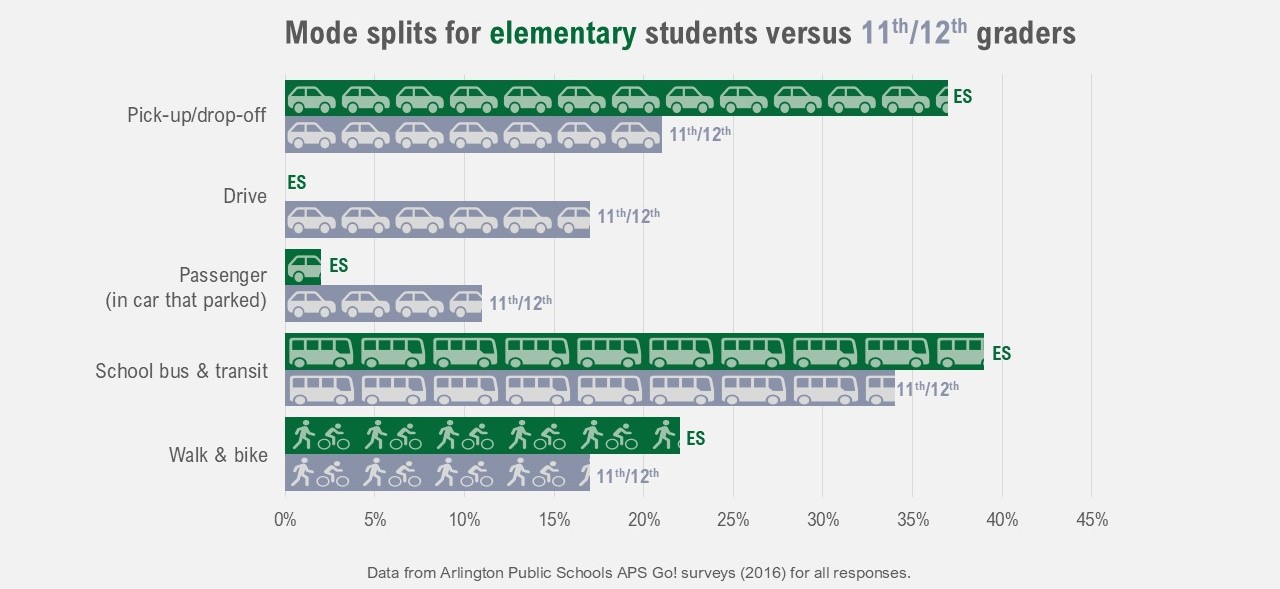
High school students have much lower rates of being picked-up/dropped-off by their parents
Private Schools Generate More Traffic
Secondly, private schools can generate much more traffic than public schools. There are two main reasons for this: (1) they draw from a much larger area than public schools (even choice public schools), and they do not always have a robust school bus network – often not having any at all.
The following chart shows that private elementary schools can have 2 to 3 times the traffic impacts on a per-student basis compared to their public counterparts. Gorove Slade has worked with private schools on many occasions to lessen their traffic impacts, including strategies such as enhancing and increasing bus service, and establishing a robust carpooling program. The specific strategies we recommend private schools use vary from school to school and are based on a data driven approach.
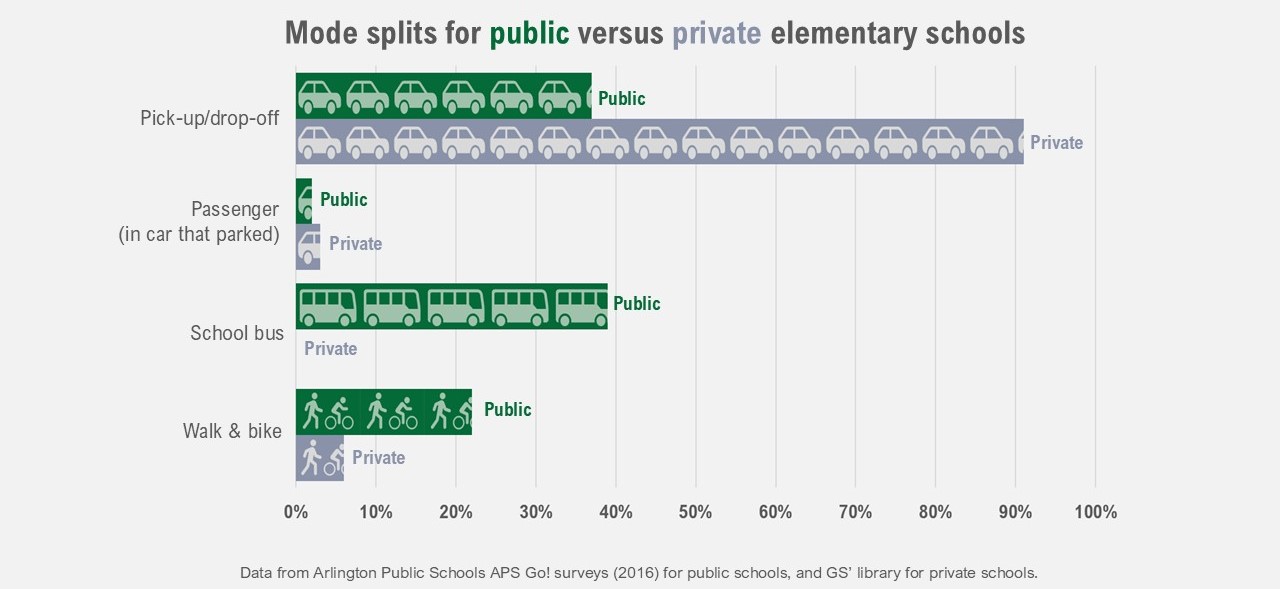
Private schools generate significantly more traffic than public schools
Public Choice Schools Have More Bus Demand
Finally, a common misconception is that choice schools (i.e., schools that don’t draw from surrounding neighborhoods) have more traffic demand than neighborhood schools. The data we’ve seen tells us that there’s a different transportation demand between the two, but it’s not a higher number of vehicles, but rather an increase in the number of students riding the bus.
2. Pick-up/Drop-off Carries Some Risk
When we say that schools can create a lot of traffic demand in a short period of time, we weren’t exaggerating. Imagine a shopping center with a grocery store and a number of smaller shops and restaurants. Now imagine a public elementary school in a building of the exact same size. During morning arrival, the school will generate more than double the traffic of the shopping center. Private schools without any strategies for reducing demand can generate an even higher rate of traffic.
As we wrote above, this traffic occurs for just 15 to 20 minutes twice a day. Over the course of a day, the amount of traffic generated by office buildings and shopping centers dwarfs that of a school, regardless of type. Thus, the ways to decrease traffic impact are different, and focus on encouraging students to arrive to school on other modes, and operational solutions at the school to keep impacts off neighborhood streets.
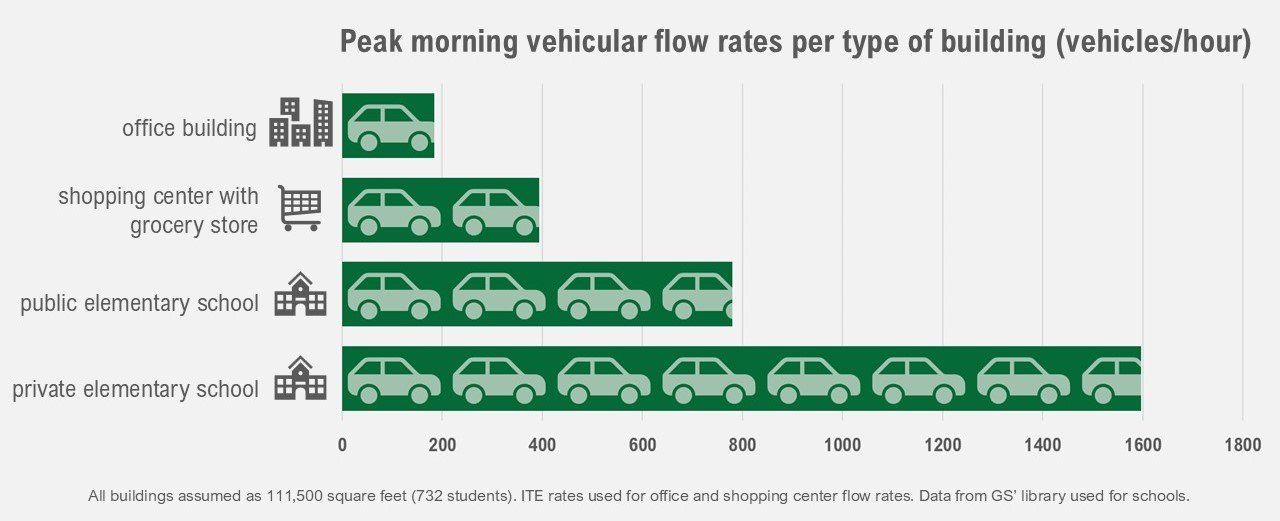
In the morning elementary schools can generate much more traffic than other land uses
3. Schools are Often Located in Residential Neighborhoods
Finally, most K-12 schools are in residential neighborhoods, which means:
Traffic solutions can conflict with the built environment. Widening roads with more lanes to compensate for arrival/dismissal traffic, even if there is room to accommodate it, could be a conflict in a residential neighborhood. Creating overbuilt roadways for when it’s not arrival/dismissal times would lead to speeding, longer crosswalks, and a poorer pedestrian experience. Thus, many solutions for school traffic include operational or management ones, including spreading out school arrivals (e.g., having different grades arrive at offsetting times), the use of police officers or school crossing guards to direct traffic, and even the use of school-specific timings on nearby traffic signals (e.g., extra green time for the school for 15 to 30 minutes).
Although a good plan can minimize impacts to a neighborhood, it can be difficult to remove them completely, especially on tight, urban school sites. This is usually in the form of traffic impacts during arrival and dismissal, notably queues from parents trying to drop-off/ pick-up their student. Other impacts can be from teachers and staff parking on local streets.
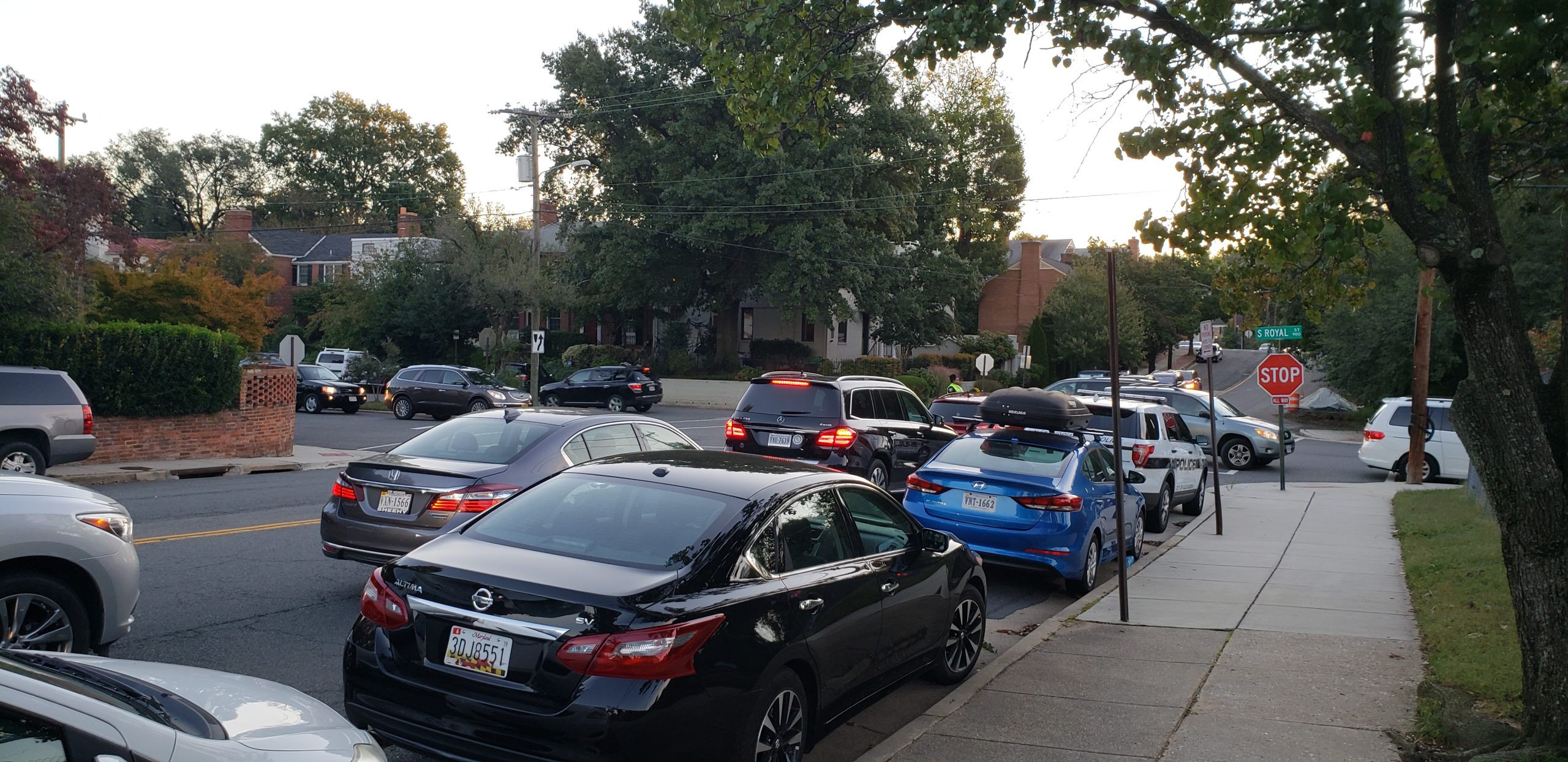
Parents waiting to pick-up students blocking a local street
Gorove Slade’s experience has given us insights on how to handle the potentially tricky transportation aspects associated with K-12 schools. This insight makes us the perfect partner to help tackle the school traffic conundrum.
School transportation planning requires balancing safety, efficiency, and community concerns in ways that traditional land uses don’t. Connect with Rob Schiesel, PE, to explore solutions tailored to your school’s unique needs.
